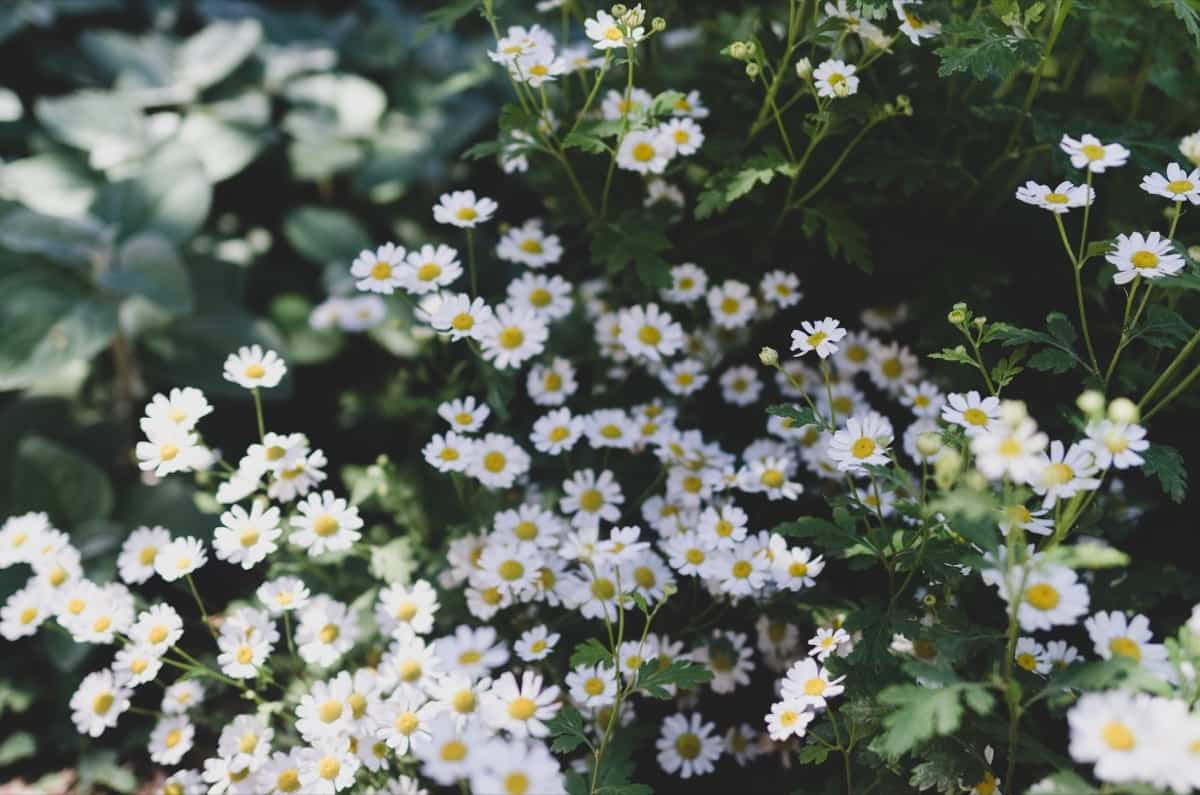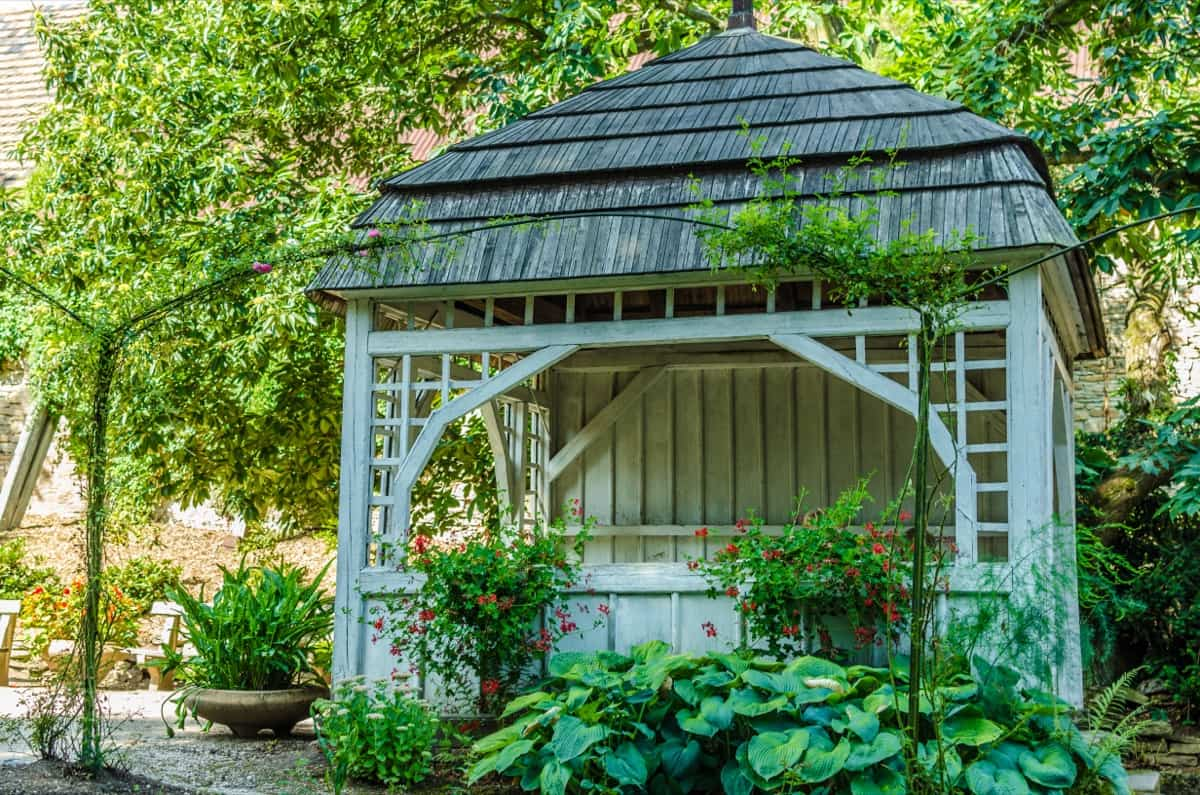Gardening in the shade can be a unique yet rewarding experience, opening up new possibilities for planting a wide range of beautiful, shade-loving plants. It can seem daunting initially, especially when contemplating which vegetables grow best in the shade, the best soil for a shade garden, and building a shade for a vegetable garden.

Adding full shade garden ideas and perennial shade garden ideas while also considering the specific needs of shade garden plants is a crucial aspect of this venture. However, with an understanding of the basics, a careful selection of plants, and proper care, you can build a thriving garden even in the shadiest corners of your yard.
How to Build a Shade Garden
Understanding the Basics of Shade Gardening: A Comprehensive Guide
A garden in a shaded area can be an oasis of calm, respite from the midday sun, and a habitat for wildlife. There are different types of shade: deep, partial, dappled, and dry shade. Deep shade can be found beneath dense evergreens or large buildings where sunlight rarely penetrates.
Partial shade refers to areas that receive direct sunlight for only part of the day. Dappled shade is found under light, open tree canopies where sunlight filters through. Dry shade, often found under trees with large root systems, can be particularly challenging as the trees absorb most of the available moisture. Each shade type requires a specific approach to ensure plant health and vitality.
Choosing the Right Plants for Your Shade Garden: Tips and Recommendations
Some plants are better adapted to grow in shady conditions. These include certain flowers and vegetables, each with specific requirements and benefits. Flowers that grow best in shade include hostas, ferns, and foxgloves. These plants thrive in lower light conditions, adding color and variety to your garden.
Shade-tolerant vegetables include spinach, kale, and lettuce. They are beautiful additions to the garden and provide fresh, homegrown produce. Understanding which vegetables and flowers grow best in shade can be the key to creating a lush and productive shade garden.
Preparing the Soil for a Shade Garden: Step-by-step Instructions
The best soil for a shade garden is rich in organic matter, drains well, and is slightly acidic. Clear the area of weeds and grass, then dig the soil to the spade’s depth. Add compost or manure to enrich the soil and improve water retention and nutrient content. Test the pH and adjust if needed for shade-loving plants.
Creating a Design Plan for Your Shade Garden: Layout and Plant Placement
When creating a design plan for your shade garden, consider layout and plant placement carefully. Think about the plants’ different heights, textures, and colors and how they will look together. You can use tall plants like ferns as a backdrop for smaller plants.
In case you missed it: 10 Common Problems With Shade Net Gardening: How to Fix, Treatment, and Solutions

Incorporate full shade garden ideas and perennial shade garden ideas to create an aesthetically pleasing and functional space. These could include winding paths, a bench, or a water feature. Group plants with similar water and light requirements together. This technique, called hydrozoning, increases watering efficiency and reduces maintenance.
Implementing Proper Drainage in Your Shade Garden: Preventing Waterlogging
Proper drainage is important in shade gardening, preventing waterlogging and root rot. Areas with poor drainage can be improved by incorporating organic matter into the soil, which increases the soil’s capacity to absorb and hold water. You can also create raised beds or berms, which allow excess water to drain away more easily. Another solution is to install a French drain or a dry creek bed to redirect water. Remember, too much water can be as harmful to plants as too little, especially in a shade garden.
Providing Irrigation for Shade-loving Plants: Watering Techniques
Irrigation is crucial for maintaining a healthy shade garden. Shade-loving plants usually require less water than those growing in full sun but still need consistent moisture. The best time to water is in the early morning when evaporation rates are lower, and the plants can take up the water they need before the day’s heat. Save water by using a soaker hose or drip irrigation to supply water directly to plant roots. Keep an eye on your plants, as they will show signs when they need more water, such as wilting leaves or slowed growth.
Mulching Strategies for a Shade Garden: Benefits and Application
Mulching is a key strategy in a shade garden. It helps to conserve moisture, regulate soil temperature, and suppress weeds. Organic mulches, such as compost, leaf mold, or well-rotted manure, also improve the soil structure and fertility as they decompose. First, clear any weeds to mulch your shade garden, then spread a 2 to 3-inch layer of mulch around your plants, being careful to avoid touching the plant stems to prevent rot.
In case you missed it: 9 Ways to Keep Chickens Cool During Summer: Chicken Heat Stroke Treatment and Shade Ideas

Controlling Weeds in Shade Garden: Effective Methods and Tools
Weeds can be a problem in any garden, and a shade garden is no exception. They compete with your desired plants for water, nutrients, and light. Hand-pulling or hoeing works well for minor infestations. You might use a weed-suppressing membrane or mulch for larger weed populations, which blocks light and prevents weed germination and growth. Regular monitoring and timely action can prevent weeds from taking over your garden.
Managing Pests and Diseases in a Shade Garden: Prevention and Treatment
Pests and diseases can pose challenges to your shade garden. Slugs and snails are common pests in shady, damp areas and can be controlled by hand picking or using wildlife-friendly slug pellets. Powdery mildew and other fungal diseases also thrive in humid conditions. They can be prevented by providing good air circulation around plants and watering at the soil level to avoid wetting leaves. It’s always better to use organic methods and products whenever possible to avoid harming beneficial insects and the wider environment.
Maintaining and Pruning Shade-loving Plants: Essential Care Practices
Properly maintaining and pruning shade-loving plants can promote healthy growth and enhance the garden’s overall appearance. Pruning involves removing dead or damaged wood, thinning out overcrowded areas to improve air circulation, and shaping plants to desired forms. Best time for this practice is usually in late winter or early spring when plants are dormant. The cut should be clean and made at a slight angle to avoid water pooling and causing disease. Regular fertilizing with an organic, slow-release fertilizer will keep your plants healthy and blooming.
Which Vegetables/Flowers Grow Best in Shade?
In conclusion, numerous vegetables and flowers grow best in shade, adding a wealth of color, texture, and even taste to your shade garden. Vegetables like spinach, kale, and lettuce can thrive in a shade garden. Shade-tolerant flowers such as hostas, ferns, and foxgloves can create a vibrant display, attracting beneficial insects and providing year-round interest.
In case you missed it: Shades of Darkness: Exquisite Black Rose Varieties

Conclusion
Building a successful shade garden involves a deep understanding of the unique requirements of shade-loving plants, from choosing the right soil to providing proper care.
- Feed Your Flock for Less: Top 10 Tips to Save on Chicken Feed
- Ultimate Guide to Ossabaw Island Hog: Breeding, Raising, Diet, and Care
- Hatching Answers: The Top 10 Reasons Your Chickens Aren’t Laying Eggs
- Eggs and Economics: Breaking Down the Cost of Raising Backyard Chickens
- Defend Your Greens: Proven Methods to Keep Iguanas Out of Your Garden
- Ultimate Guide to Cinnamon Queen Chicken: A Comprehensive Guide for Beginners
- Ultimate Guide to California Tan Chicken: Breeding, Raising, Diet, Egg-Production and Care
- Ultimate Guide to Marsh Daisy Chicken: Breeding, Raising, Diet, and Care
- 10 Types of Chicken Farming Businesses You Can Start for Profits